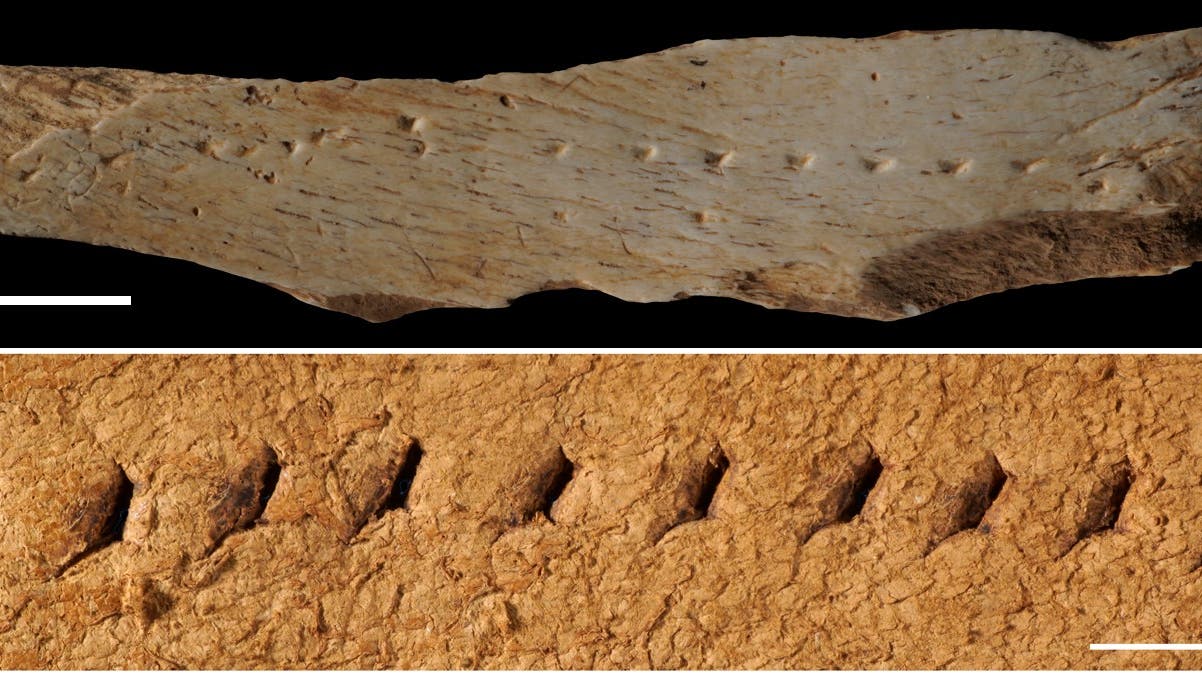A piece of bone about 40,000 years old from northeastern Spain may have once been used as a base for leatherwork. The regular circular indentations were created because the previous user had punched holes in a piece of leather with a flint chisel to then sew them up. The bone served as a working platform, which gained a score with each hit. The arrangement of the slits, so regular in parts, has no deeper meaning in itself. It’s just the result of a user’s effort to create a particularly regular font, Luc Doyon of Purdue University and his team wrote in the journal “Science Advances”.
Time and time again, experts suggest that the regular markings on Stone Age artifacts had their own function, such as counting marks or decorating the item. There are often good reasons for this assumption, for example because the find is mold-etched or otherwise decorated. Taken together, these explanations suggest that modern humans—and perhaps even their relatives—were capable of abstract, logical, mathematical reasoning from a very early time.
A find such as the bone in the present study, which was found at the Canyars site and belongs to the Aurignacian Paleolithic culture, does not meet these requirements: it is not carved or decorated, and only part of the recesses are regularly arranged. Tests on modern bones indicated that the incisions were most likely made with a typical Aurignacian stone tool, a triangular platform. Other tools such as bone awls broke or left other marks.

“Alcohol buff. Troublemaker. Introvert. Student. Social media lover. Web ninja. Bacon fan. Reader.”







More Stories
Pluto: Astrophysicists have now found a scary explanation
“Time seems to cure long Covid.”
Science: The use of artificial intelligence is changing the way hospitals operate